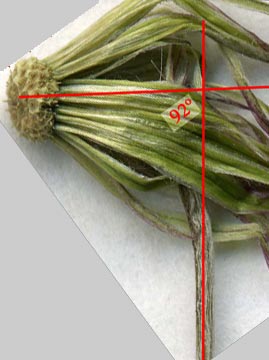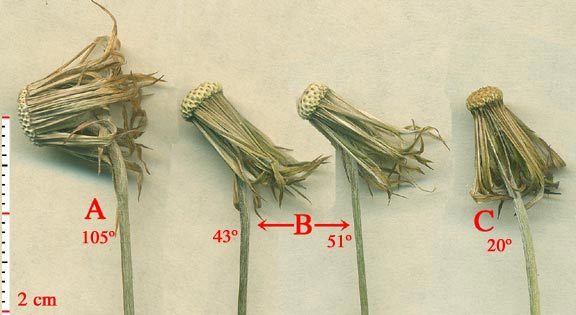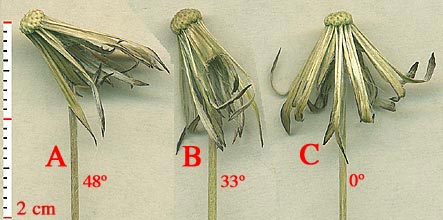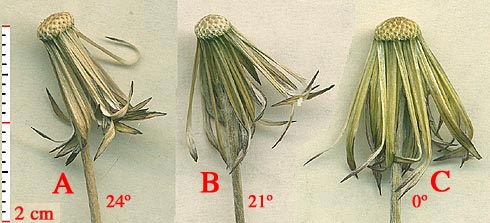Peduncles at Dispersal
by Bob Harms

Peduncle Length at Dispersal
Peduncles were collected and measured when a large number of heads were at the dispersal stage. Overall C. texana had the longest peduncles and the C. carduacea populations in relatively more shaded areas above Deadman's Creek the shortest. Soil moisture and exposure varied considerably, but did not seem to be a factor.
| | Number | Range | Average |
| C. texana | 46 | 20–46 cm | 33 cm |
| C. carduacea with Apparent Ligules | 56 | 5–27 cm | 14 cm |
| C. carduacea with Greatly Reduced Ligules | 53 | 9–34 cm | 24 cm |
Angle of Head Relative to Peduncle at Dispersal
The taxonomic literature gives contradictory descriptions of the head/peduncle orientation ‘in fruit’; e.g.,
"nodding in ... fruit" (Nesom 2006)
and
"erect in fruit" (Diggs et al. 1999)
Given the vague nature of the terms ‘in fruit’ and ‘nodding’ this should not be surprising. Simpson 1975, in her description of closely related C. nutans gives a more precise ‘at fruit maturity’, which is easier to evaluate — and which I take to be the same as ‘at dispersal’.
At dispersal the peduncles were mostly erect, but sometimes bowing only at the very apex.
The angle of the bend was measured by plotting a line at a right angle to the receptacle against the upper straight portion of the peduncle.

C. texana heads exhibited the greatest amount of nod, a number exceeding 90° — and none were fully erect, 0°. C. carduacea heads never reached 90°, and many were fully erect.
- C. texana

-
C. carduacea with Apparent Ligules

- C. carduacea with Greatly Reduced Ligules

Plant Resources Center Home Page — Flora of Texas
— Chaptalia


